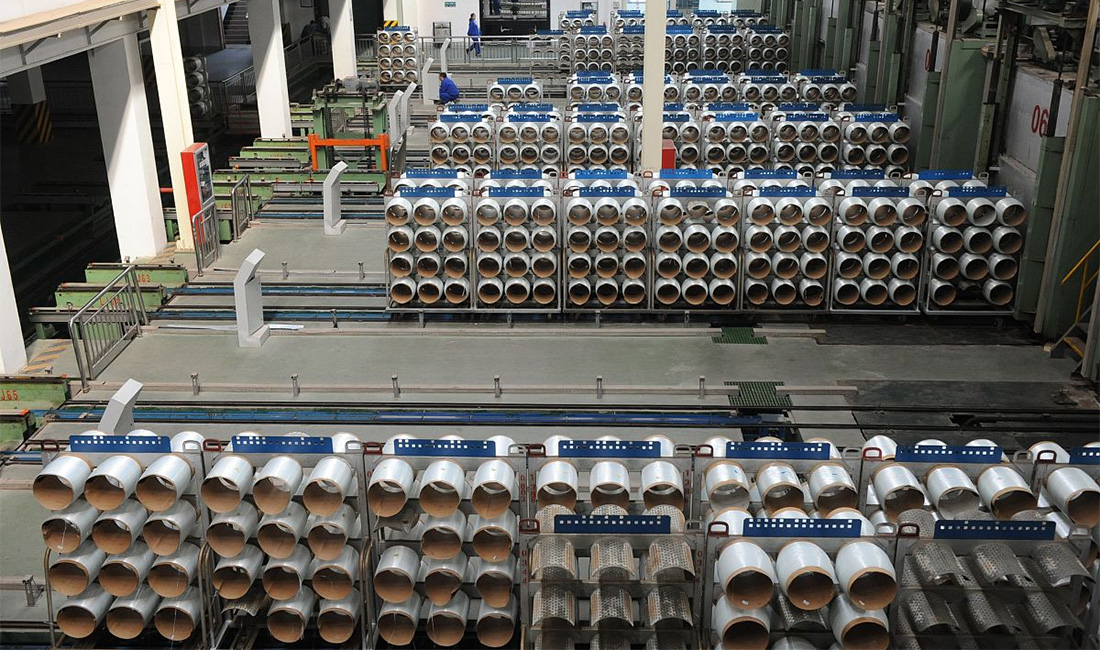There are some unique aspects of fiberglass as compared to processes for compositing other materials. The following is a detailed introduction to the manufacturing process of glass fiber composites, as well as a comparison with other material composite processes:
Glass fiber composite material manufacturing process
Raw material preparation:
Glass fiber: from molten glass quickly drawn into the filaments, according to the raw material components can be divided into alkali, non-alkali, alkali and special glass fibers, such as high silica, quartz fibers and so on.
Resin blends: used as binders to provide shape and other properties such as chemical resistance and strength to composites. Common types are polyester, epoxy or vinyl ester.
Manufacturing Process:
Fiberglass Tow Preparation: fiberglass tows can be woven into fabrics or mats, or used directly, depending on the intended use.
Resin Impregnation: The fiberglass tows are impregnated with a resin mixture that allows the resin to fully penetrate the fibers.
Molding: The resin-impregnated fibers are molded into the desired shape, which can be accomplished by hand lay-up, pultrusion, fiber winding, and other processes.
Curing: The molded material is subjected to heat and pressure to harden and solidify the resin to form a composite structure.
Post-processing:
After curing, fiberglass composites can be subjected to a variety of finishing processes, including trimming, painting or polishing to meet specific aesthetic or functional requirements.
Comparison with other material composite processes
Carbon Fiber Composites:
Carbon fiber and glass fiber have similarities in manufacturing processes, such as both requiring steps such as fiber preparation, resin impregnation, molding and curing.
However, the strength and modulus of carbon fibers are much higher than glass fibers, so the manufacturing process can be more complex in terms of fiber alignment, resin selection, etc.
The cost of carbon fiber composites is also higher than glass fiber composites.
Aluminum Alloy Composites:
Aluminum alloy composites are usually manufactured by metal-nonmetal composite techniques, such as hot press molding and vacuum bagging.
Compared to fiberglass composites, aluminum alloy composites have higher strength and rigidity, but are also denser and may not be suitable for applications where lightweighting is critical.
Manufacturing processes for aluminum composites may require more complex equipment and higher costs.
Plastic composites:
Plastic composites are typically manufactured through injection molding, extrusion, and blow molding processes.
Plastic composites are less costly than fiberglass composites, but may have less strength and heat resistance.
The manufacturing process of plastic composites is relatively simple and suitable for mass production.
Uniqueness of the manufacturing process of fiberglass composites
Combination of fiber and resin:
The combination of glass fiber and resin is the key to the manufacturing process of glass fiber composites. Through reasonable fiber arrangement and resin selection, the mechanical properties and corrosion resistance of composites can be optimized.
Molding technology:
Glass fiber composites can be molded using a variety of molding techniques, such as hand lay-up, pultrusion, and fiber winding. These techniques can be selected based on the shape, size and performance requirements of the product.
Quality control during curing:
Curing is a critical part of the glass fiber composite manufacturing process. By controlling the curing temperature and time, it can ensure that the resin is completely cured and a good composite structure is formed.
In summary, the glass fiber composites manufacturing process has its uniqueness, and there are some differences compared with other material composite processes. These differences make the glass fiber composites have unique advantages in mechanical properties, corrosion resistance, thermal insulation properties, etc., and are widely used in various fields.
Post time: May-15-2025







